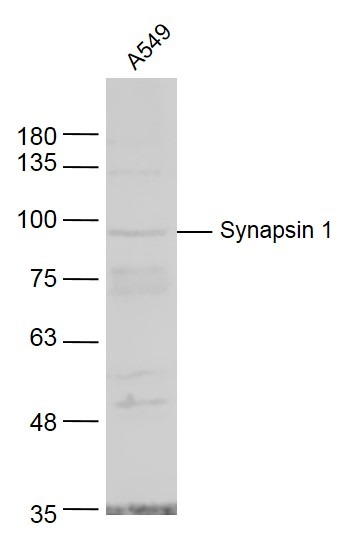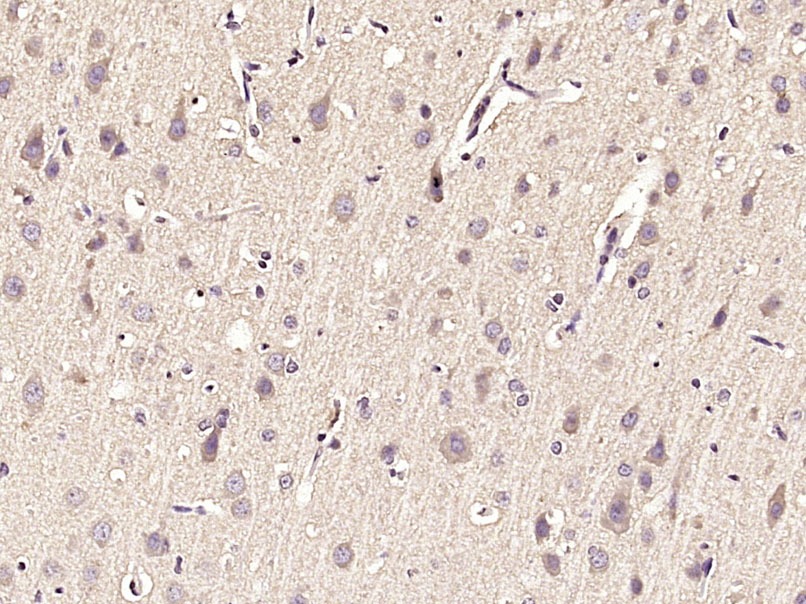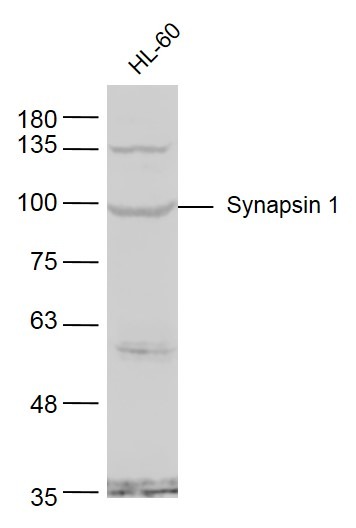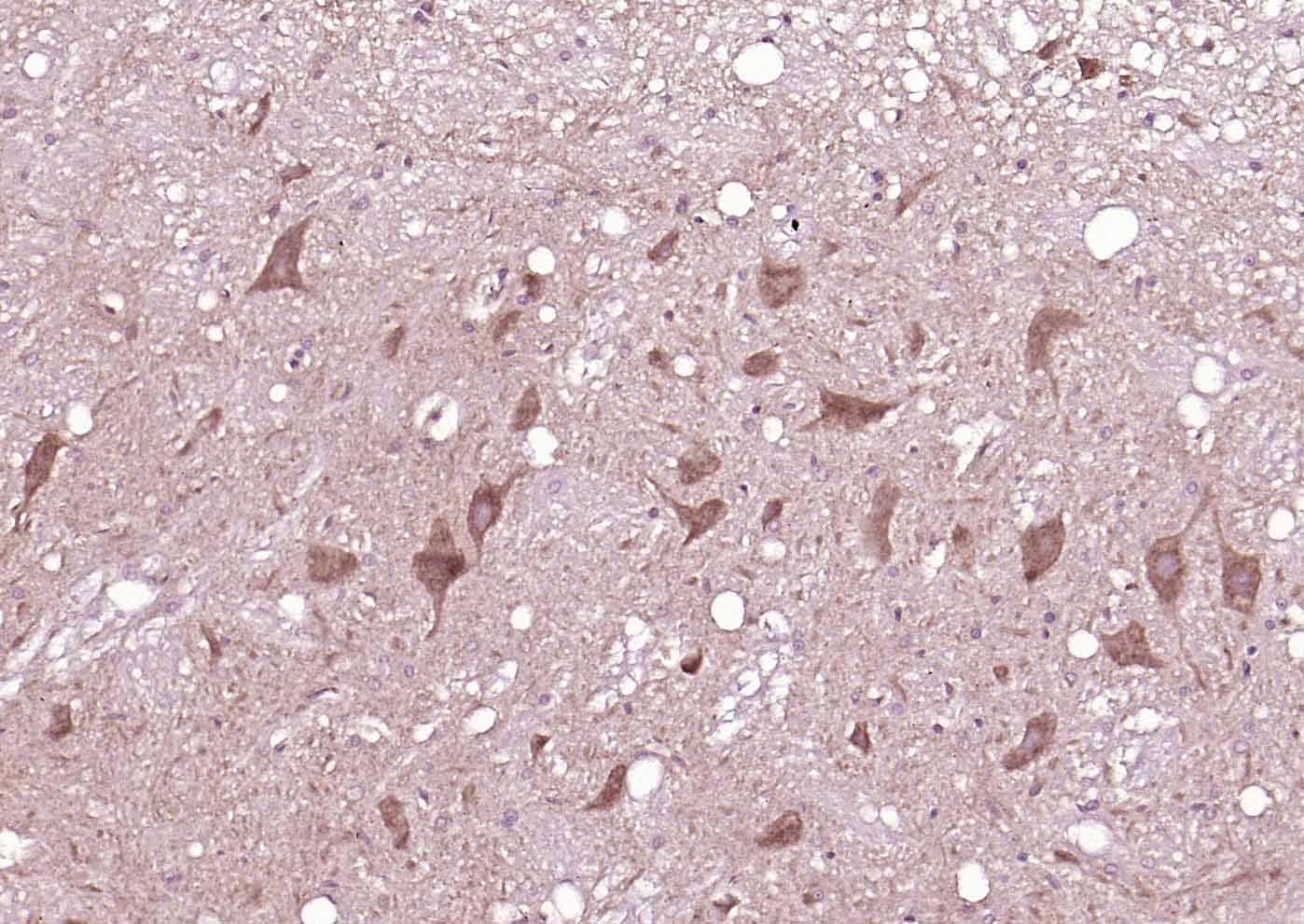Shopping Cart
- Remove All
 Your shopping cart is currently empty
Your shopping cart is currently empty
Anti-Synapsin-1 Polyclonal Antibody is a Rabbit antibody targeting Synapsin-1. Anti-Synapsin-1 Polyclonal Antibody can be used in IF,IHC-Fr,IHC-P,WB.
| Pack Size | Price | Availability | Quantity |
|---|---|---|---|
| 50 μL | $220 | 7-10 days | |
| 100 μL | $373 | 7-10 days | |
| 200 μL | $528 | 7-10 days |
| Description | Anti-Synapsin-1 Polyclonal Antibody is a Rabbit antibody targeting Synapsin-1. Anti-Synapsin-1 Polyclonal Antibody can be used in IF,IHC-Fr,IHC-P,WB. |
| Synonyms | Synapsin-1, Synapsin I, SYN1, Brain protein 4.1 |
| Ig Type | IgG |
| Reactivity | Human,Rat (predicted:Mouse,Pig) |
| Verified Activity | 1. Sample: A549 (Human) Cell Lysate at 40 μg Primary: Anti-Synapsin 1 (TMAB-01801) at 1/300 dilution Secondary: IRDye800CW Goat Anti-Rabbit IgG at 1/20000 dilution Predicted band size: 85 kDa Observed band size: 85 kDa 2. Paraformaldehyde-fixed, paraffin embedded (Rat brain); Antigen retrieval by microwave in sodium citrate buffer (pH6.0); Block endogenous peroxidase by 3% hydrogen peroxide for 30 minutes; Blocking buffer (3% BSA) at RT for 30 min; Antibody incubation with (Synapsin 1) Polyclonal Antibody, Unconjugated (TMAB-01801) at 1:400 overnight at 4°C, followed by conjugation to the secondary antibody (labeled with HRP) and DAB staining. 3. Sample: HL-60 (Human) Cell Lysate at 40 μg Primary: Anti-Synapsin 1 (TMAB-01801) at 1/300 dilution Secondary: IRDye800CW Goat Anti-Rabbit IgG at 1/20000 dilution Predicted band size: 85 kDa Observed band size: 85 kDa 4. Paraformaldehyde-fixed, paraffin embedded (rat cerebellum); Antigen retrieval by boiling in sodium citrate buffer (pH6.0) for 15 min; Block endogenous peroxidase by 3% hydrogen peroxide for 20 min; Blocking buffer (normal goat serum) at 37°C for 30 min; Incubation with (Synapsin 1) Polyclonal Antibody, Unconjugated (TMAB-01801) at 1:200 overnight at 4°C, followed by operating according to SP Kit (Rabbit) instructionsand DAB staining.     |
| Application | |
| Recommended Dose | WB: 1:500-2000; IHC-P: 1:100-500; IHC-Fr: 1:100-500; IF: 1:100-500 |
| Antibody Type | Polyclonal |
| Host Species | Rabbit |
| Subcellular Localization | Cell junction, synapse. Golgi apparatus. |
| Construction | Polyclonal Antibody |
| Purification | Protein A purified |
| Appearance | Liquid |
| Formulation | 0.01M TBS (pH7.4) with 1% BSA, 0.02% Proclin300 and 50% Glycerol. |
| Concentration | 1 mg/mL |
| Research Background | This gene is a member of the synapsin gene family. Synapsins encode neuronal phosphoproteins which associate with the cytoplasmic surface of synaptic vesicles. Family members are characterized by common protein domains, and they are implicated in synaptogenesis and the modulation of neurotransmitter release, suggesting a potential role in several neuropsychiatric diseases. This member of the synapsin family plays a role in regulation of axonogenesis and synaptogenesis. The protein encoded serves as a substrate for several different protein kinases and phosphorylation may function in the regulation of this protein in the nerve terminal. Mutations in this gene may be associated with X-linked disorders with primary neuronal degeneration such as Rett syndrome. Alternatively spliced transcript variants encoding different isoforms have been identified. [provided by RefSeq, Jul 2008] |
| Immunogen | KLH conjugated synthetic peptide: human Synapsin I |
| Antigen Species | Human |
| Gene Name | SYN1 |
| Gene ID | |
| Protein Name | Synapsin-1 |
| Uniprot ID | |
| Biology Area | Synapse marker,SNAPs & SNAREs |
| Function | Neuronal phosphoprotein that coats synaptic vesicles, binds to the cytoskeleton, and is believed to function in the regulation of neurotransmitter release. The complex formed with NOS1 and CAPON proteins is necessary for specific nitric-oxid functions at a presynaptic level. |
| Molecular Weight | Theoretical: 85 kDa. |
| Stability & Storage | Store at -20°C or -80°C for 12 months. Avoid repeated freeze-thaw cycles. |
| Transport | Shipping with blue ice. |

Copyright © 2015-2025 TargetMol Chemicals Inc. All Rights Reserved.